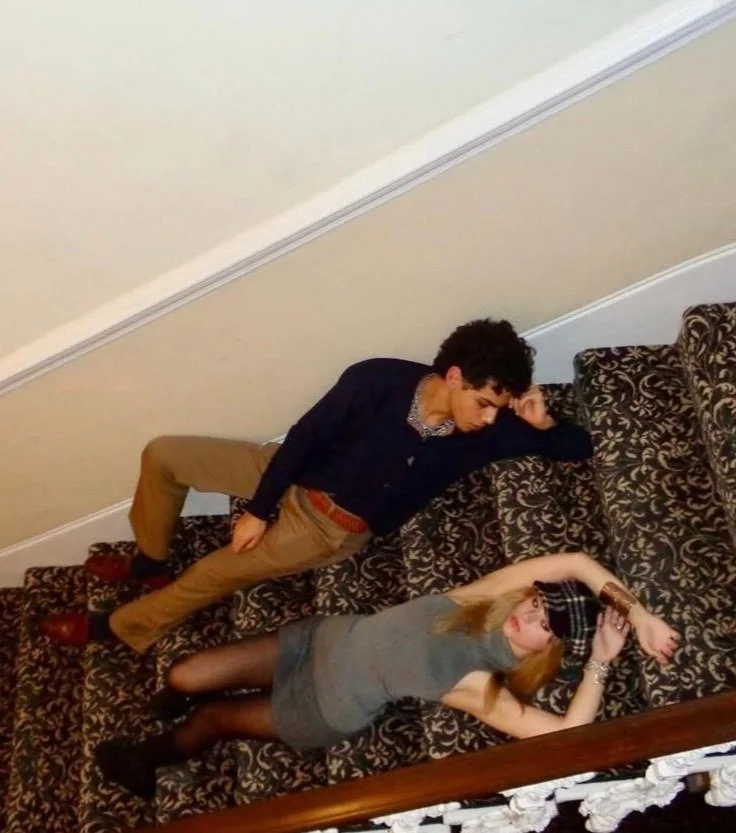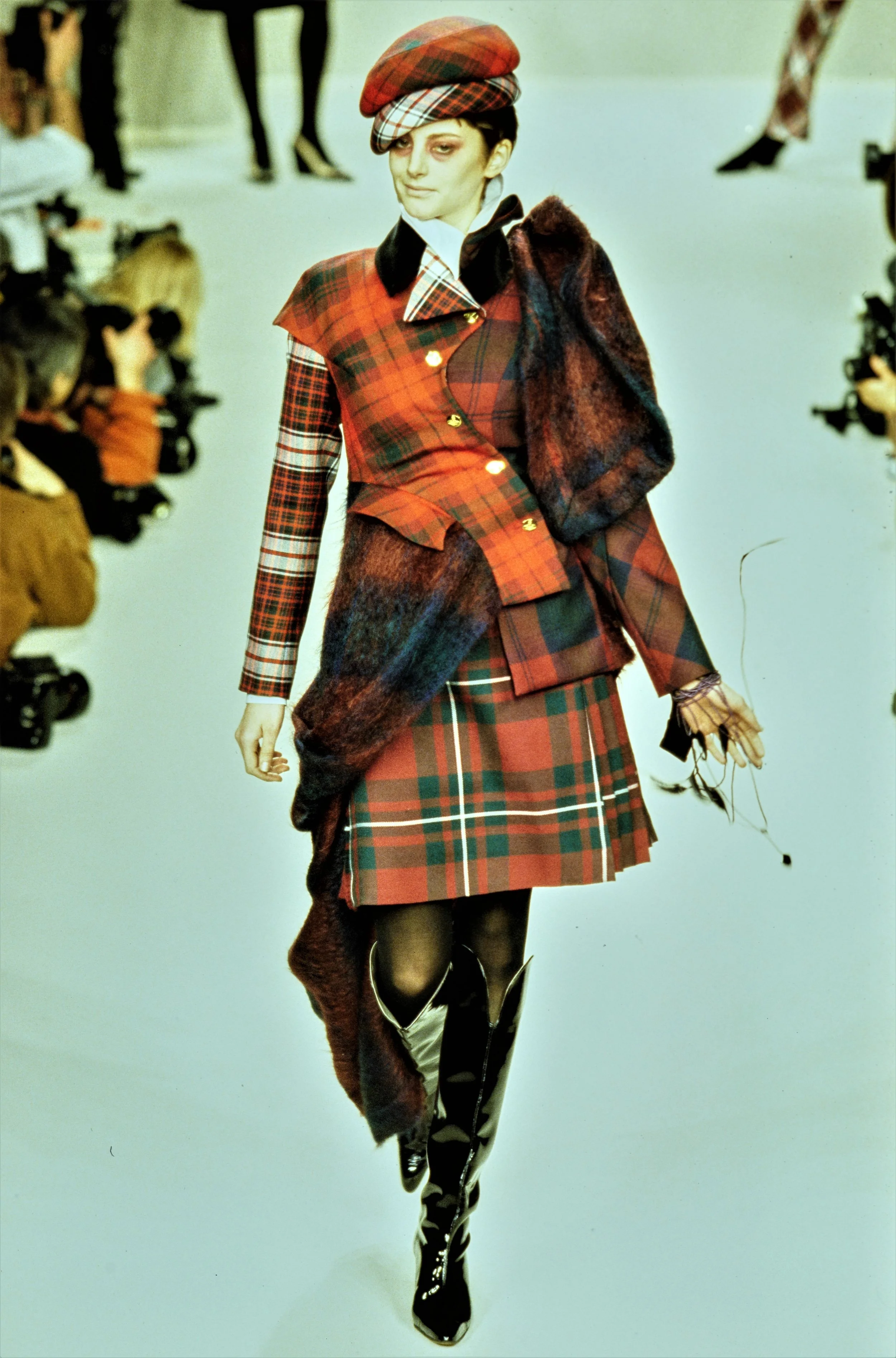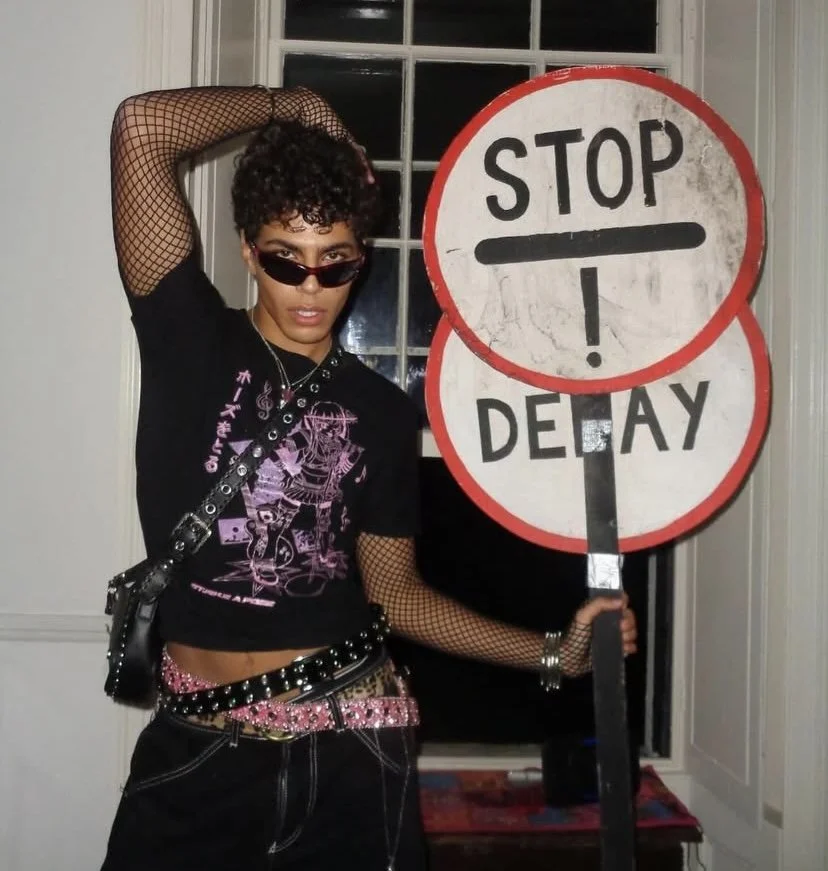Layered, Referenced, Reimagined: The Beauty of Unintentional Fashion Fusion
In the age of TikTok and Instagram, fashion often feels compartmentalized. Algorithms push us toward rigid style aesthetics—clean girl, coquette, indie sleaze—encouraging people to fully commit to a single stylistic identity. Despite this daily fashion in London is different. It thrives on contradiction, on blending influences that might seem at odds yet come together in an effortless, organic way.
My friend Ramzi perfectly embodies this, his approach to dressing challenges the notion of being boxed into one aesthetic. Ramzi’s style isn’t just eclectic—it’s intentional, drawing from a variety of references that span decades, subcultures, and fashion houses.
Image referenced from @ramzi._k
The first image captures a vintage editorial feel, with its ornate, slightly nostalgic setting. Yet, the outfits themselves lean into a high-street sensibility, proving that fashion’s power lies in styling.
Vivienne Westwood, Fall 1996, Vogue (Condè Nast Archive, 2021)
The outfit seen in the bottom of the image features checkered hat is a direct nod to British heritage fashion, commonly associated with Burberry’s classic plaid. The shape and structure of the hat hint at something more rebellious, evoking Vivienne Westwood’s Fall 1996 Ready-to-Wear collection featuring a structured beret, with a puffy silhouette. This collection referenced traditional highland dress. The clash of tradition and punk joins two crucial aspects of British fashion together.
Indie influences shine through. The combination of sheer black tights, a grey mini skirt, and a high-neck sweater feels distinctly early 2000s—reminiscent of London’s underground club scene, where effortless party looks ruled the streets. It’s a silhouette championed by icons like Kate Moss and Alexa Chung, whose styles walked the line between polished and disheveled. Chunky boots ground the outfit, embracing the ‘90s grunge resurgence that continues to permeate contemporary fashion.
On the other hand, the tailored elements in the other outfit—a navy button-down and chinos—speak to tradition. However, the unbuttoned collar injects a carefree, rebellious attitude. The patterned belt, though subtle, transforms the look. It carries a distinctly American influence, its bohemian, Western feel aligning with brands like Bode or Ralph Lauren’s vintage-inspired collections.
These seemingly disparate elements—British punk, early 2000s indie, and American heritage merge seamlessly into something entirely unique.
Image referenced from @ramzi._k
Ramzi’s personal style constantly reinvents itself. What makes his approach to fashion so compelling is his ability to layer textures and accessories to build an intricate visual story.
In another look, the focus shifts to belt layering—a styling trick reminiscent of early 2000s alternative fashion. The base belt, a bold cheetah print, sets the tone, whilst pink and black belts with silver hardware are layered on top, a crossbody saddle bag in a similar print enhances the texture play. The result? A carefully chaotic mix that feels nostalgic yet modern.
Notably the use of fishnet layering—a detail that instantly recalls Jean Paul Gaultier’s Fall/Winter 1989 collection. Gaultier frequently used full-body fishnets as provocative base layers beneath structured, tailored coats. Here, Ramzi reinterprets the concept, using fishnet sleeves to create a punk-infused aesthetic, aligning more with alternative fashion’s raw, rebellious edge.
The graphic tee adds another layer of subcultural reference. The cropped band tee, with its mix of black and pink, is a staple of early 2000s teen culture. It also echoes the influence of J-fashion, where Western alternative trends absorbed elements of Harajuku streetwear and Visual Kei. The colour palette—black with hyper-feminine pink accents—feels reminiscent of Dior by Galliano in the 2000s, where distressed leather and gothic influences met feminine, whimsical details.
Christian Dior by John Galliano SS 1998 'In a Boudoir Mood'
Dior Couture 1998
In an edition of The Run-Through with Vogue (23 Jan, 2025), the episode discussed the conformist nature of fashion and styling emerging from shared references. While many alternative subcultures emerge as a reaction against mainstream trends, they inevitably absorb influences from designers, publications, and pop culture, creating a feedback loop. These unintended case studies illustrate these concepts. The outfits, like compositions, feel deeply personal and unique, the individual elements are subtly influenced by decades of fashion history. Most people don’t consciously reference Gaultier’s fishnets, Galliano’s colour contrasts, or Westwood’s punk-infused tailoring—but these ideas trickle down through the media, influencers, and street style. Unless someone is a dedicated follower of a particular designer, their styling choices are often the result of cultural osmosis rather than direct homage.
I’d like to thank my wonderful friend Ramzi for being such an instrumental part of this weeks post. Please give him a follow over at his Instagram @ramzi._k !




